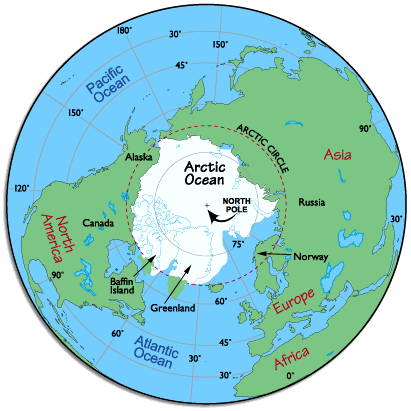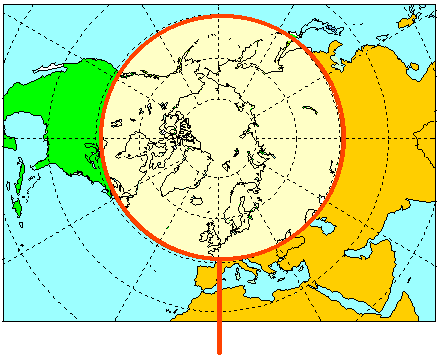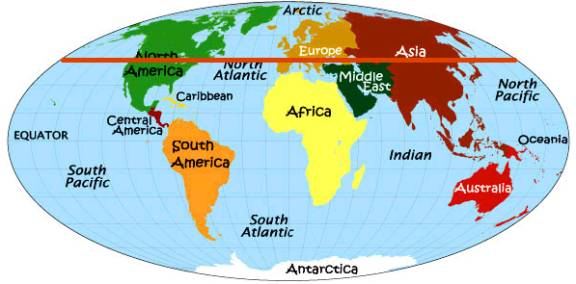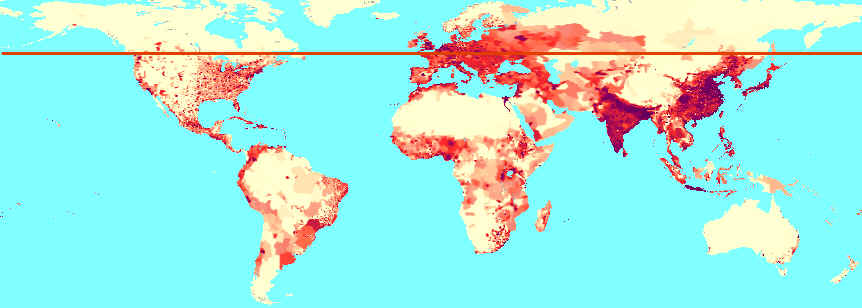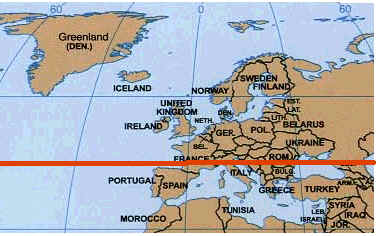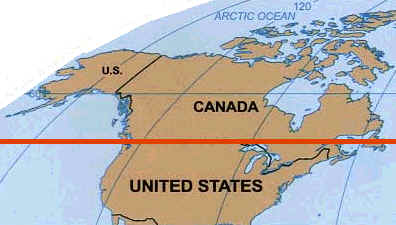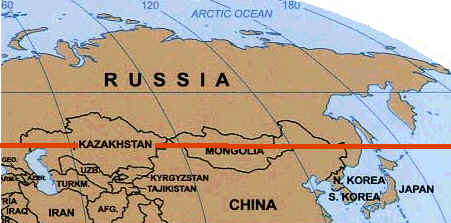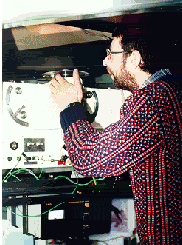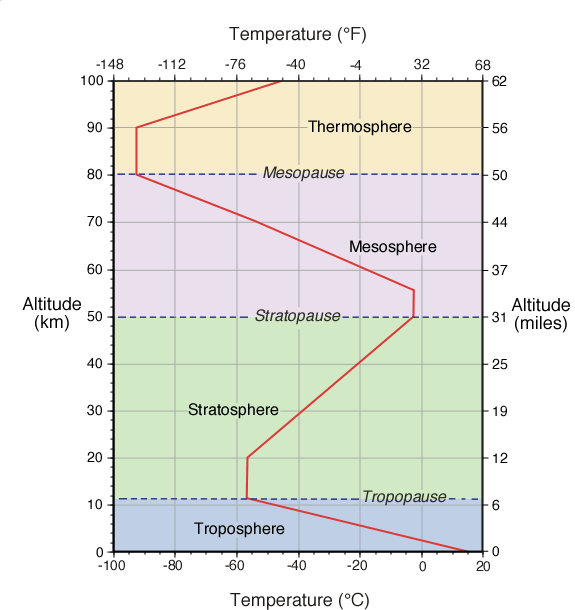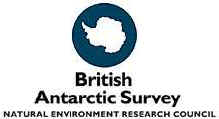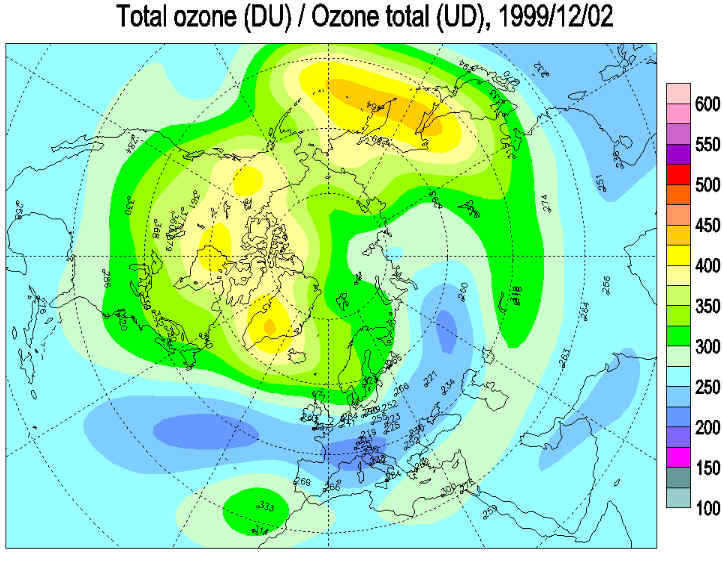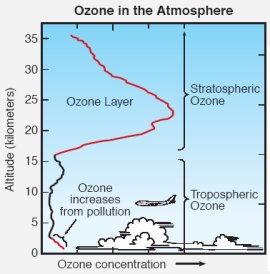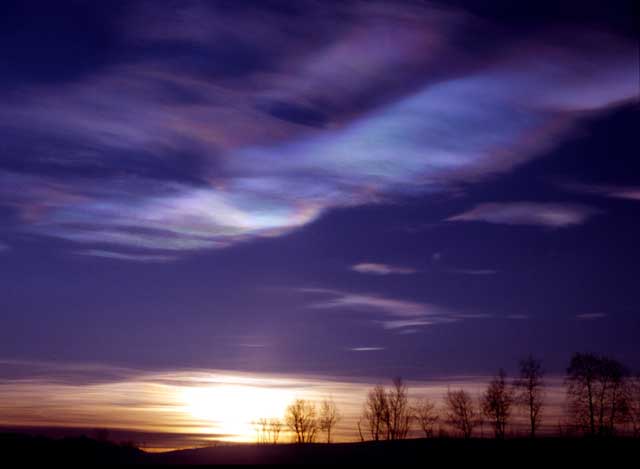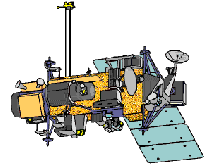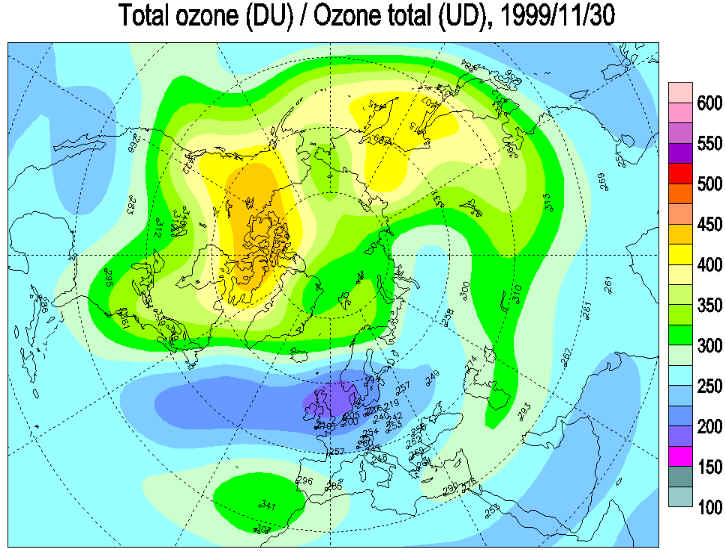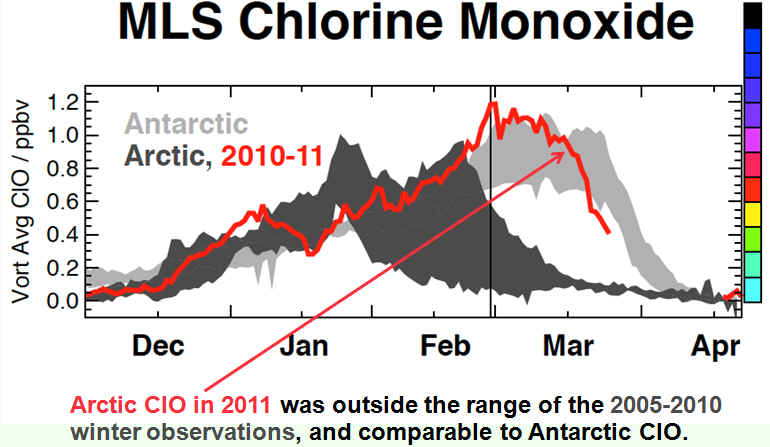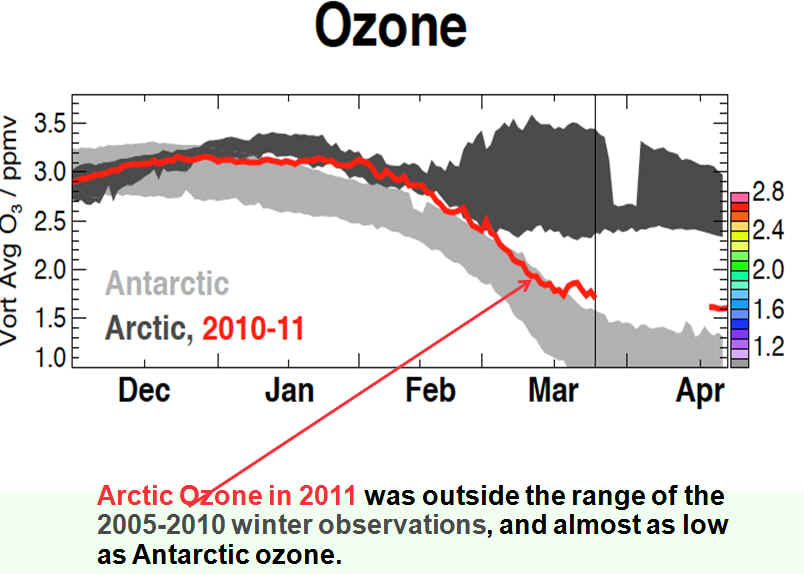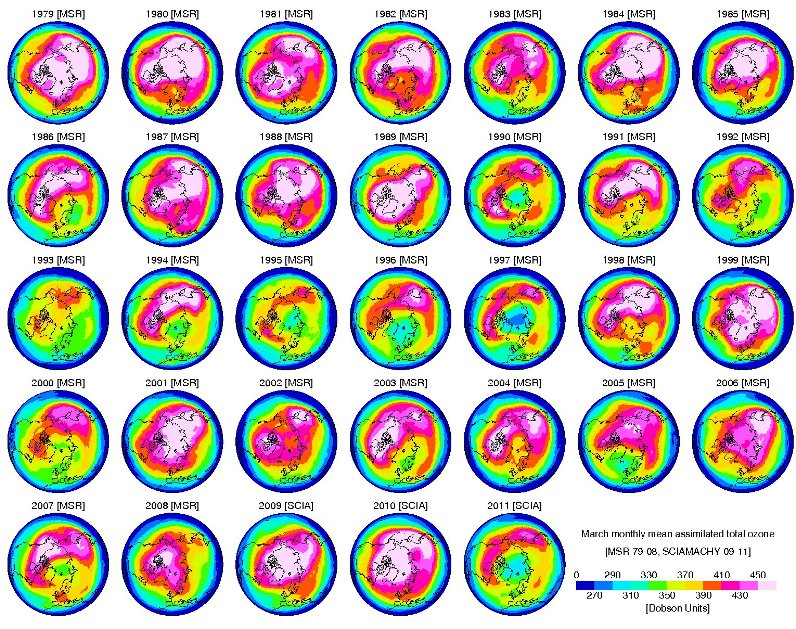
|
||||||||||||||||||||||||
|
Arctic Ozone Arctic Map from Worldatlas.com An Arctic Ozone Hole, if similar in size to the Antarctic Ozone Hole, could expose over 700+ million people, wildlife and plants to dangerous UV ray levels. The likely hood of this happening seems inevitable based on the deterioration of ozone layer caused by the effects of global warming on the upper atmosphere.
Area that may be affected by formation of Arctic Ozone Hole is the yellow area within the red circle
Area that may be affected by formation of Arctic Ozone Hole is above the redline
World Population Density Map Area directly affected is above the red line on these maps
"The formation of an Ozone Hole occurring over the Arctic will likely happen within the next 20 years"- Jonathan Shanklin one of The BAS scientists who discovered the Antarctic ozone hole-1999 Professor Jonathan Shanklin of The British Antarctic Study said the loss itself of ozone and the greenhouse effect is causing the upper atmosphere to become colder, which is a condition that facilitates ozone destruction. Professor Shanklin was speaking to Alex Kirby of the BBC Radio Four's environment program Costing the Earth and reportedly said the following -
Jonathan Shanklin of The BAS making ozone measurements © British Antarctic Survey "The atmosphere is changing, and one of the key changes is that the ozone layer is getting colder. And when it gets colder, particularly during the winter, we can get clouds actually forming in the ozone layer, and these clouds are the key factor.
Chemistry can take place on them that activates the chlorine and makes it very much easier for it to destroy the ozone. It's getting colder because of the greenhouse gases that are being liberated by all the emissions we have at the surface.
We think that within the next 20 years we are likely to see an ozone hole perhaps as big as the present one over Antarctica but over the North Pole." Joseph Farman, Brian Gardiner and Jonathan Shanklin, are the BAS scientists who discovered the Antarctic ozone hole. Professor Shanklin also is the Director of the British Astronomical Association's Comet Section and the President of the Cambridge Natural History Society Arctic Ozone Hole in The Near Future? May 25,2000-Upper atmospheric conditions in The Northern Hemisphere are becoming similar to those of the Antarctic. The result of this could be the formation of an "Arctic Ozone Hole" or "low ozone event". The alarming difference is that there are millions of people that live in the area that will be exposed to this deadly radiation. These conditions could expose large numbers of people and animals to more ultraviolet radiation, which can cause skin cancer and disrupt reproduction of some animals and destroy plant life.
December 2,1999 An Arctic " low ozone event" could easily be blown south by high-altitude winds, and appear over populated areas of The United States, Canada, Europe and Asia. It could trigger public alerts against going out in the sun without protective clothing across The Northern Hemisphere. Experts predict that an estimated 10 % reduction in the ozone layer will result in a 25 % increase in non-melanoma skin cancer rates for temperate latitudes by the year 2050. ARCTIC OZONE MAY NOT RECOVER AS EARLY AS PREDICTED NASA Press Release 5/25/2000 The ozone layer that protects life on Earth may not be recovering from the damage it has suffered over the Arctic region as quickly as scientists previously thought, according to a paper published in the May 26 issue of the journal Science. Specifics of the research also will be presented at the annual meeting of the American Geophysical Union in Washington, DC, on May 31.
More polar
stratospheric clouds than anticipated are forming high above the North
Pole, causing additional ozone loss in the sky over the Arctic, according
to Dr. Azadeh Tabazadeh, lead author of the paper and a scientist at
NASA's Ames Research Center in California's Silicon Valley. The
stratosphere comprises Earth's atmosphere from about 9 to 25 miles (about
15 to 40 kilometers) altitude and includes the ozone layer.
Arctic polar stratospheric clouds
"Polar stratospheric clouds provide a
'double-whammy' to stratospheric ozone. They provide the surfaces
which convert benign forms of chlorine into reactive, ozone-destroying
forms, and they remove nitrogen compounds that act to moderate the
destructive impact of chlorine," said Dr. Phil DeCola, Atmospheric
Chemistry Program Manager at NASA Headquarters, Washington, DC.
NASA's Upper Atmosphere Research Satellite Researchers used data from NASA's Upper Atmosphere Research Satellite to analyze cloud data from both the north and south polar regions for the study. "What we found from the satellite was that polar stratospheric clouds currently last twice as long in the Antarctic as compared to the Arctic," Tabazadeh said. "However, our calculations show that by 2010 the Arctic may become more 'Antarctic-like' if Arctic temperatures drop further by about 5 to 7 degrees Fahrenheit (about 3 to 4 degrees Celsius)," she said.
Environment Canada Nov 30 1999 ozone image When Arctic polar stratospheric clouds last longer, they can precipitate, removing nitrogen from the upper atmosphere, which increases the opportunity for chlorine compounds to destroy ozone more efficiently. The polar stratospheric clouds involved in the reactions contain nitric acid and water, according to researchers who discovered these clouds in 1986.
"Data from the Microwave Limb Sounder on UARS have provided the first
opportunity to observe nitric acid throughout the Arctic and the Antarctic
over a period of many years," said Michelle Santee, a scientist at NASA's
Jet Propulsion Laboratory, Pasadena, CA, who is a co-author of the Science
paper. "The continued presence of nitric acid in the Arctic winter
-- which is not the case in the Antarctic -- helps to moderate ozone loss
by reducing the amount of reactive chlorine, but this could change in the
future," she added.
Arctic Ozone 2011
Recent observations
from satellites and ground stations suggest that atmospheric ozone levels for
March 2011 in the Arctic were approaching the lowest levels in the modern
instrumental era. What those readings mean for the remainder of the year is
unclear. But what they mean for the long-term is that the recovery from
human-induced ozone depletion is an uneven climb.
High levels of Activated Chlorine observed in Arctic in March 2011
As a result of the high Cl levels, there were large ozone losses
Credit:Professor Jonathan Pyle from University Cambridge It was exceptionally cold in the ozone layer in the past month. During the first half of March there were several days with record-low temperatures in the stratosphere at altitudes of about 20 km, and the cold period continued for the entire month. This led to sustained low ozone values over the polar region. The area with low ozone over the North Pole was observed by several satellite sensors, e.g. SCIAMACHY on the EnviSat satellite, and the Ozone Monitoring Instrument OMI on EOS-Aura. This is demonstrated by the figure, which shows the monthly-mean ozone amount for March 2011 compared to the months March in the period 1979-2010. The situation this year resembles the years 1996, 1997 and 1990, where similar low ozone levels over the North Pole were observed. The continuing cold spell in the stratosphere, where the ozone layer is located, was remarkable. In contrast, the previous years 2009 and 2010 showed an early so-called stratospheric warming in January and mid-February. Temperatures in the stratosphere in the first half of March this year were low enough for polar stratospheric clouds to form. In these clouds chlorine compounds are formed from CFCs which break down ozone over the North Pole when sunlight is present. In addition to the cold temperatures, the transport of ozone-rich air from the tropics was reduced this year because of the strong winds around the North Pole at 20km altitude. The ozone layer over the North Pole nevertheless has a thickness of more than 250 Dobson units (a unit expressing the number of molecules ozone per square meter). This is much more than what is observed for the ozone hole over the South Pole in September-November. 250-300 DU is comparable to the thickness of the ozone layer in the tropics. The relatively large ozone breakdown leads to reduced ozone levels over the Northern Hemisphere this Spring because it will take some time before the lost ozone has been replenished.
The figure above shows the March monthly-mean total ozone values for the period 1979-2011 as it is monitored by MACC partner KNMI. The period 1979-2008 is derived from the multi-sensor reanalysis (MSR) of the ozone layer. The analysis for 2009-2011 is based on an assimilation of SCIAMACHY ozone columns.
|
